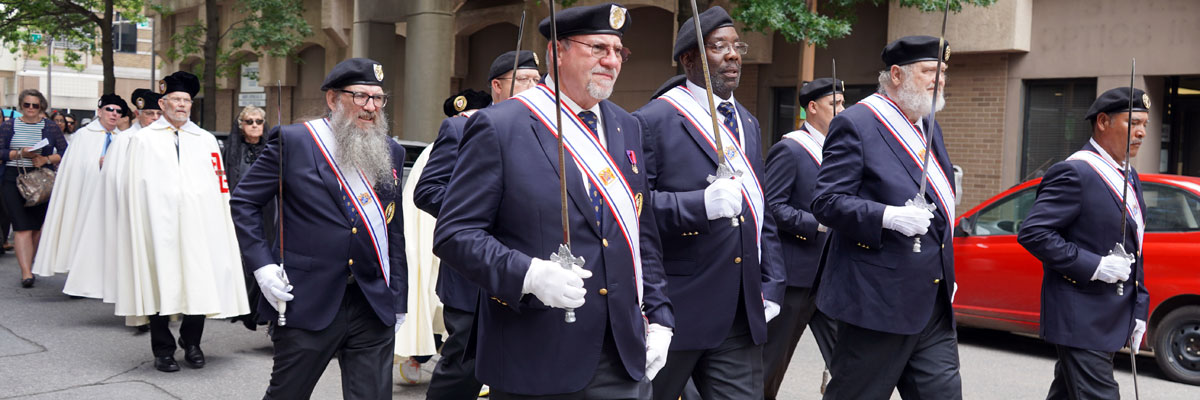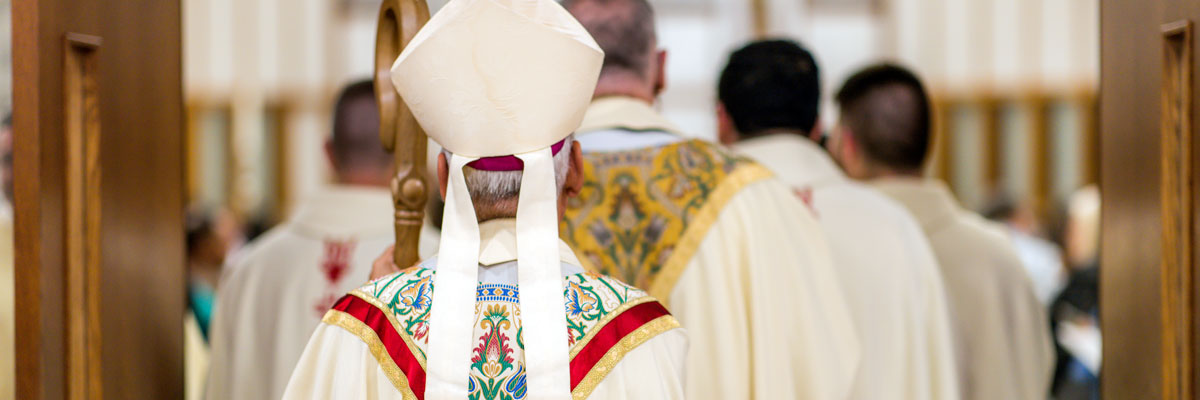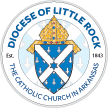Official Website of the
Catholic Diocese of Little Rock
What's New
Bishop releases liturgical updates June 26 - Jun 28, 2024 Bishop Anthony B. Taylor released the following "Liturgical Updates in the Light... |
Calendar of Events
| July 21, 2024 - June 8 Year of Going Out On Mission Nationwide |
| Dec. 24, 2024 - Jan. 6, 2026 Jubilee Year 2025 Worldwide |
| June 14 Diocese of Little Rock Jubilee Year 2025 Celebration in Springdale St. Raphael Church - Springdale |
| June 28 Diocese of Little Rock Jubilee Year 2025 Celebration in Little Rock Christ the King Church - Little Rock |
| July 28 Feast of Blessed Stanley Rother, Martyr All Parishes - Diocese of Little Rock |
Roman Missal, Third Edition Q&A
On Nov. 27, 2011, Roman Catholics in the United States began celebrating the Mass using the new "Roman Missal, Third Edition". The following questions are often asked about the new missal. If these answers do not address your questions, please Contact Us.
Q: What is the Roman Missal?
A: The Roman Missal is the ritual text or book for the celebration of the Mass. It contains the Mass prayers as well as instructions for the priest, the congregation and other ministers on how the Mass should be celebrated. The Roman Missal is first promulgated in a Latin text which is then translated into various languages for use throughout the world. The first edition of the Roman Missal containing the reformed liturgy of the Second Vatican Council was promulgated by Pope Paul VI in 1970. A second edition, with revisions was issued in 1975. Since 1974 the Roman Missal has been called the Sacramentary in the U.S. It will now be known by the title, Roman Missal.
Q: Why are we receiving a new edition of the Roman Missal now?
A: Pope John Paul II promulgated the "Roman Missal, Third Edition" in the year 2000. The bulk of the text is identical to that of the second edition. But among other things, the third edition contains prayers for the celebration of recently canonized saints, additional prefaces for the eucharistic prayers, additional Masses and prayers for various needs and intentions and some updated and revised instructions for the celebration of the Mass.
Q: How was the third edition translated from Latin to English?
A: The International Commission on English in the Liturgy (ICEL) prepared draft translations of each section of the missal. The conferences of bishops in English-speaking countries received each draft and had the opportunity to offer comments and suggestions. A second draft of each section was prepared by ICEL and, after approval by the conferences of bishops, was sent to the Vatican for the authoritative approval of the Congregation for Divine Worship and the Discipline of the Sacraments. This process of consultation and approval was completed in 2010.
Q: How did the Mass change when we began using the new edition?
A: The Mass looks the same but it sounds different. The actions of the Mass did not change but the words that we speak and hear changed. After Pope John Paul promulgated the Latin third edition, the Congregation for Divine Worship issued new principles and rules for the translation of Latin liturgical texts into the vernacular. The style of the translation of the third edition is different. In accord with the new rules for translation the revised translation follows the style of the original Latin texts more closely, including word order, concrete images, repetition, parallelisms and rhythm. The English used in the Mass texts is more formal and dignified in style and includes many poetic images. References to Scripture and the writings of Church Fathers are more evident.
Q: Does this mean the translation we used since 1974 was incorrect?
A: No, the book we called the Sacramentary was approved by the conferences of bishops and the Congregation for Divine Worship in 1974 and again in 1985. It was the valid ordinary form for the Mass for 36 years. That translation fostered the faith of two generations of Catholics and retains a valid place in Church history. The revised translation, now called the Roman Missal, attempts to introduce a more elevated style of language and to recapture many poetic images and scriptural allusions. The new missal gives us the opportunity to renew and improve our celebration of the Mass and to take a fresh look at our liturgical practices.
Q: How have the words that people pray and say at Mass changed?
The following are two examples:
Part of Mass |
Former Text |
New Text |
|
Greeting |
Priest: The Lord be with you. People: And also with you. |
Priest: The Lord be with you. People: And with your spirit. |
|
Invitation to Communion |
Priest: This is the Lamb of God who takes away the sins of the world. Happy are those who are called to his supper. All: Lord, I am not worthy to receive you, but only say the word and I shall be healed. |
Priest: Behold the Lamb of God, behold him who takes away the sins of the world. Blessed are those called to the supper of the Lamb. All: Lord, I am not worthy that you should enter under my roof, but only say the word and my soul shall be healed. |
Both of these texts are examples of following the Latin text more closely and maintaining the clarity of references to Sacred Scripture. The response, “And with your spirit,” is a closer translation of the Latin, “Et cum spiritu tuo.” The greeting, “with your spirit,” is found four times in St. Paul’s letters and the “spirit” referred to is not a person or community’s mental or emotional state rather it is the Holy Spirit dwelling in the community. The Mass begins with a greeting acknowledging the presence of the Holy Spirit in the priest and the entire worshipping community.
In the response to the invitation to Communion, “to receive you,” becomes, “that you should enter under my roof,” a direct translation of the Latin, “ut intres sub tectum meum,” and a clear reference to the Gospel story of the centurion who asks Jesus to heal his servant but feels unworthy to have Jesus visit his home.
Q: How are the people learning these changes?
A: Most of the changes in the new translation have to do with words the priest prays. For the changes in the peoples' parts many parishes are providing pew cards that collect the changes in a user-friendly format. Such cards are being offered by several publishers.
What's New
Bishop releases liturgical updates June 26 - Jun 28, 2024 Bishop Anthony B. Taylor released the following "Liturgical Updates in the Light... |
Calendar of Events
| July 21, 2024 - June 8 Year of Going Out On Mission Nationwide |
| Dec. 24, 2024 - Jan. 6, 2026 Jubilee Year 2025 Worldwide |
| June 14 Diocese of Little Rock Jubilee Year 2025 Celebration in Springdale St. Raphael Church - Springdale |
| June 28 Diocese of Little Rock Jubilee Year 2025 Celebration in Little Rock Christ the King Church - Little Rock |
| July 28 Feast of Blessed Stanley Rother, Martyr All Parishes - Diocese of Little Rock |









